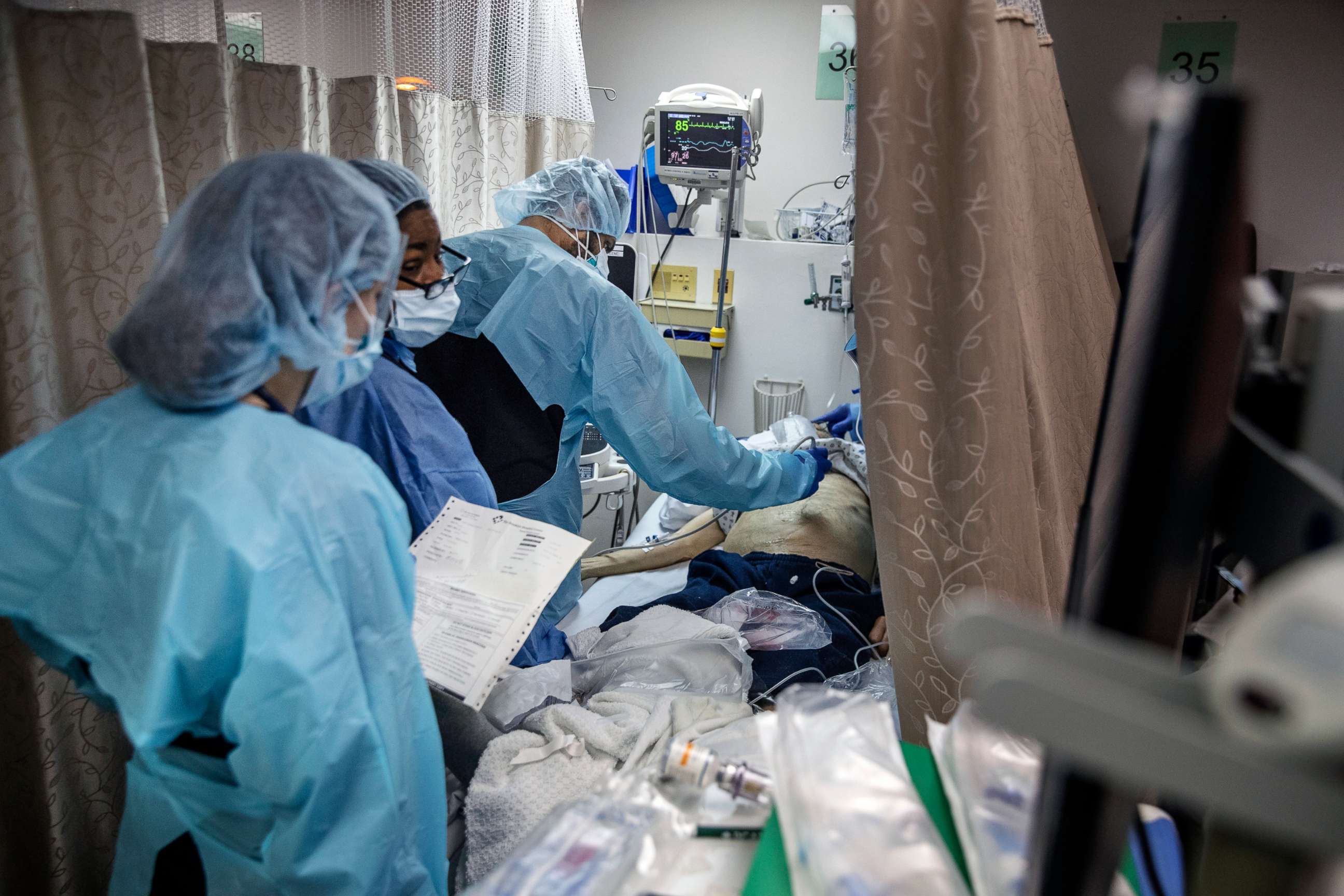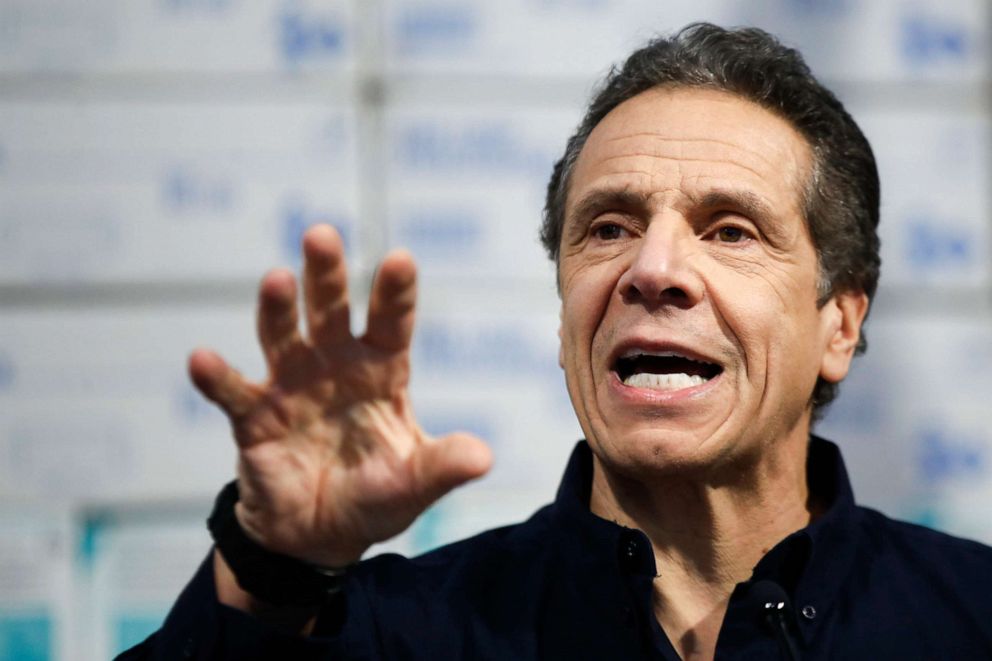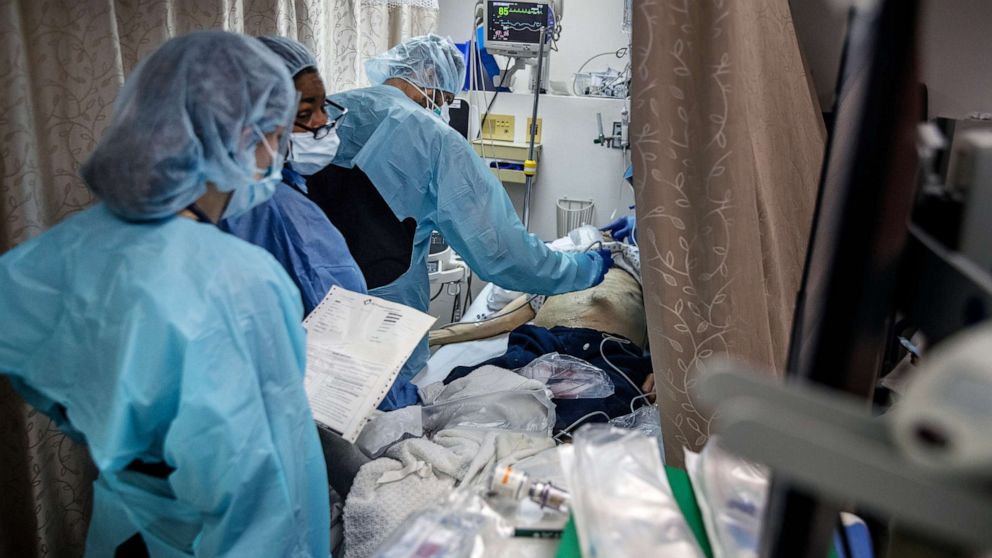New York approves ventilator splitting, allowing hospitals to treat two patients with one machine
New York hospitals can now attempt to treat two coronavirus patients with a single ventilator, Gov. Andrew Cuomo announced on Thursday, a move that could help the state make better use of its scarce supply of lifesaving breathing machines as the outbreak continues to surge.
New York-Presbyterian Hospital has developed a split-ventilation protocol that has been shared with the New York State Department of Health, which quickly approved the practice.
Calling the technique “not ideal, but workable,” Cuomo said ventilator splitting may be necessary given some projections that suggest the state may need as many as 30,000 ventilators in the coming weeks.
The practice is controversial, and the move drew immediate criticism in a joint statement issued by several medical associations advising clinicians “that sharing mechanical ventilators should not be attempted because it cannot be done safely with current equipment.”

New York has approximately 5,000 – 6,000 ventilators -- used to help some of the sickest COVID-19 patients breathe when they are unable to do so on their own – and recently purchased an additional 7,000 machines. The state has also received 400 machines from the federal government’s stockpile.
“Why such a demand? It is a respiratory illness for a large number of people. So they all need ventilators,” Cuomo said Thursday. “Non-COVID patients are normally on ventilators for three to four days. COVID patients are on ventilators for 11 to 21 days. You don't have the same turnaround.”
With the country facing a potential shortage of hundreds of thousands of ventilators, according to some projections, the technique could soon be replicated in hospitals nationwide.
Other states are conducting experiments of their own: Tufts University Medical Center in Massachusetts is working on a similar protocol that could allow up to four patients to use a single ventilator at once.

But connecting multiple patients to a single ventilator carries its own risks, according to experts, and should only be attempted in serious emergencies.
“This is a crisis provision,” Dr. Lew Kaplan, President of the Society of Critical Care Medicine (SCCM), told ABC News, adding that the practice could pose “great” risks to patients.
“This will never be a front-line therapy.”
On Thursday, the Society of Critical Care Medicine joined the American Association for Respiratory Care (AARC), American Society of Anesthesiologists (ASA), Anesthesia Patient Safety Foundation (ASPF), American Association of Critical‐Care Nurses (AACN), and American College of Chest Physicians (CHEST) in issuing a statement following Cuomo’s announcement that warned of the dangers of the practice and recommended ventilator triage instead.
“Attempting to ventilate multiple patients with COVID‐19 … could lead to poor outcomes and high mortality rates for all patients cohorted,” the statement reads. “In accordance with the exceedingly difficult, but not uncommon, triage decisions often made in medical crises, it is better to purpose the ventilator to the patient most likely to benefit than fail to prevent, or even cause, the demise of multiple patients.”
ABC News' Dr. Mark Abdelmalek contributed to this report.
What to know about coronavirus:
- How it started and how to protect yourself: coronavirus explained
- What to do if you have symptoms: coronavirus symptoms
- Tracking the spread in the US and Worldwide: coronavirus map
Tune into ABC at 1 p.m. ET and ABC News Live at 4 p.m. ET every weekday for special coverage of the novel coronavirus with the full ABC News team, including the latest news, context and analysis.




